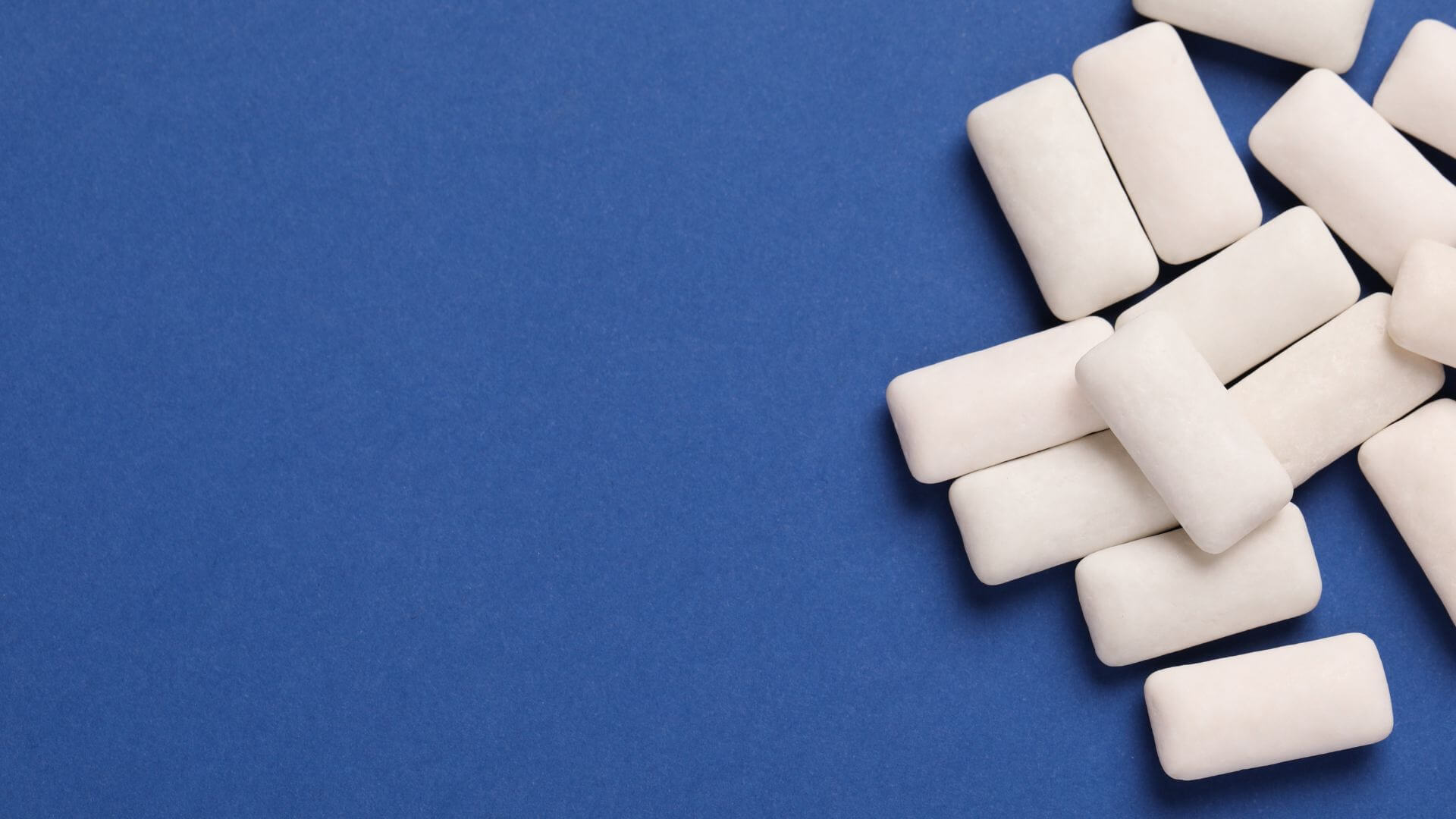When you think of plastics in your everyday life, the first things that typically come to mind are single-use water bottles, takeaway containers, garbage bags and packaging. However, plastic is far more pervasive in your daily life than you might realise. From the gum you chew to the makeup you wear, many products which are a part of your everyday routine are made with plastics or contain microplastics that have a significant impact on the environment and, quite possibly your health.
Gum: What are you actually chewing on?
That piece of gum you pop into your mouth to freshen your breath might seem harmless, but yes, there really is plastic in chewing gum! Most chewing gums contain synthetic rubber and synthetic polymers derived from petroleum-based plastics, like polyethylene. These polymers enhance the gum's texture and chewiness, but they also contribute to plastic pollution.[1] Gum is non-biodegradable and takes several years to break down, meaning it can linger in the environment for years, littering public spaces and breaking down into microplastics. If you want to make the switch to biodegradable and plastic free gum, a great choice is nuud gum!

Teabags: You could be drinking plastic
Many teabags are made with a thin layer of plastic called polypropylene, used to maintain their shape. That means millions of invisible microplastics and toxic chemicals are released every time you have a cuppa.[2] The easiest way to reduce microplastics in your tea is to choose loose-leaf tea, alternatively you can opt for plastic-free tea bag brands, like ones found here: 12 best plastic-free tea bags to make your brew better for the planet.

Makeup: Is there plastic inside too??
It’s obvious that most makeup is packaged in plastic - but did you know most cosmetic products, such as lipstick, foundation, mascara and eyeliner, also contain microplastics? These tiny plastic particles not only harm aquatic life but also find their way into the food chain, posing potential health risks.[3] You can find eco-friendly, plastic-free cosmetics brands in this list of those Certified 100% Microplastic Free by Plastic Soup Foundation.[4]

Paper Cups: They're unlikely to get recycled
Disposable paper cups, most often used for coffee or other beverages are often mistakenly considered eco-friendly. The majority of paper cups are lined with a thin layer of plastic, like polyethylene or polystyrene, to make them waterproof. This coating poses challenges for recycling and the reality is that less than 1 in 400 paper cups is currently recycled. A frightening thought since over 7 million are used every day in in the UK. Even when described as “compostable” that often means only industrially compostable and insufficient facilities exist, meaning cups end up in landfill or as litter.[5] Have your coffee in or invest in a reusable cup, it’s one of the easiest swaps you can make.
Shampoo: It's not just the bottle, there could be plastic on the inside ...
Many big brand shampoo and conditioners contain silicones – a type of synthetic polymer regarded as microplastics. Check out our other blog post, Is there silicone in your shampoo or conditioner? Why you should avoid it, to learn more and how you can spot silicones in those ingredient lists.
So, how can you avoid these plastic-filled products? Look for alternatives that are kinder to both you and the planet. Just as we offer silicone and plastic-free Shampoo and Conditioner Bars at KIND2, there are options available for gum, teabags, cups, makeup, and more. By choosing plastic-free haircare and seeking out other plastic-free alternatives, you can reduce your personal environmental impact while still enjoying high-quality products. Hopefully one day, the big brands will come to understand their customers want more sustainable options.
At KIND2, we're proud to be Certified Microplasticfree by Plastic Soup Foundation.

Ready to embark on a journey towards shiny, healthy, and plastic-free haircare? Visit the KIND2 shop and join us in making a positive switch for our planet.
[1] Roy, Amit Saha. "Improper Disposal of Non-Biodegradable Chewing Gum is One of the Biggest Threats to Our Ecology: A Review." Current World Environment 16.3 (2021): 916. http://cwejournal.org/pdf/vol16no3/CWE_Vol16_No3_p_916-927.pdf
[2] Ali, Tooba, et al. "Health risks posed by microplastics in tea bags: microplastic pollution–a truly global problem." International Journal of Surgery 109.3 (2023): 515-516. https://journals.lww.com/international-journal-of-surgery/Fulltext/2023/03000/Health_risks_posed_by_microplastics_in_tea_bags_.46.aspx
[3] Cubas, Anelise Leal Vieira, et al. "Plastics and Microplastic in the Cosmetic Industry: Aggregating Sustainable Actions Aimed at Alignment and Interaction with UN Sustainable Development Goals." Polymers 14.21 (2022): 4576. https://www.mdpi.com/2073-4360/14/21/4576
[4] Plastic Soup Foundation. (2022, April 6). 9 in 10 Products From Major Cosmetics Brands Contain Microplastics. https://www.plasticsoupfoundation.org/en/2022/04/almost-9-in-10-products-from-major-cosmetics-brands-contain-microplastics/
[5] Foteinis, Spyros. "How small daily choices play a huge role in climate change: The disposable paper cup environmental bane." Journal of Cleaner Production 255 (2020): 120294. https://www.sciencedirect.com/science/article/abs/pii/S0959652620303413

